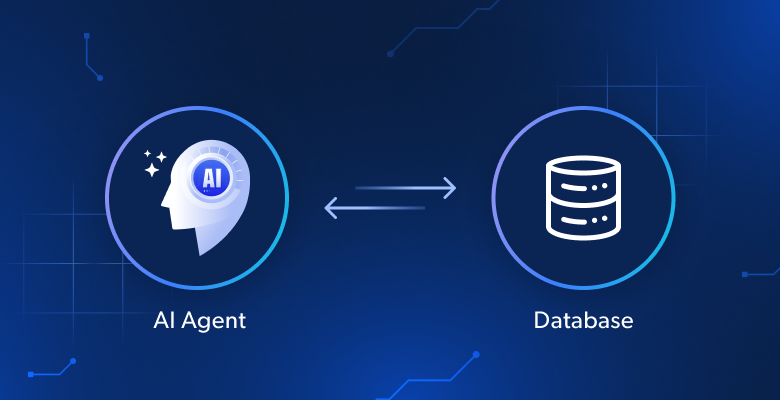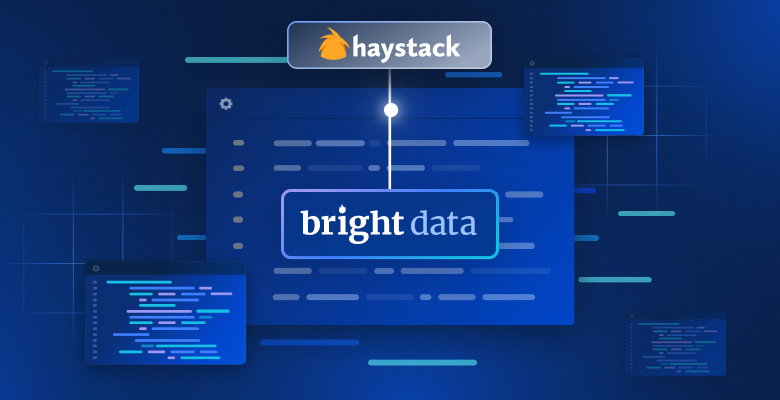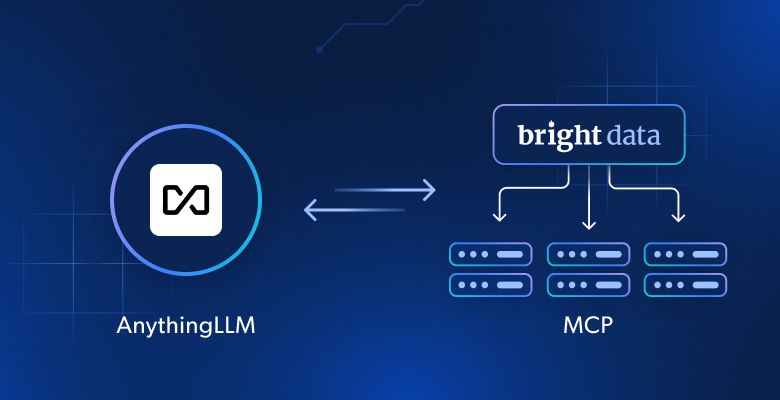In this guide, you’ll learn:
- What is structured data?
- What is unstructured data?
- What is semi-structured data?
- How to choose the right tool for your project.
Key Differences Between Them
- Structured Data: Structured data always follows a model. Whether you’re using a webapp with ORM (Object Relational Mapping), or looking at your employees on a handwritten spreadsheet, each one has a “Name”, “Hire Date” and “Payrate”.
- Unstructured Data: This stuff comprises pretty much everything else—text files, music, movies, images, and more. Unstructured data will never fit neatly into your rows and columns.
- Semi-Structured Data: This follows a hybrid model. Everything is an object, but there is no uniform schema. Think employees, but include things like “Yearly Salary”, “Hourly Rate”, “Retirement Plan”, “Health Coverage”, “Union Membership” etc. These fields exist, but not every employee has them.
Structured Data
As mentioned above, structured data uses a rigid structure. Every object has all the same fields. While their values differ, their structure is identical.
Why Use It?
Structured data uses a rigid, completely predefined schema. Each spreadsheet has a set of columns. Each row has a value for all of these columns—no cell goes unfilled. In structured data, it’s easy to identify patterns, trends, and correlations, whether you’re building reports or training models.
Real World Examples of Structured Data
- SQL Databases
- CSV Files
- Excel Files
- Product Listings (name, price, description)
- Social Media Profiles (username, bio, profile page)
- Blockchains (block height, transaction count, block hash, mining difficulty)
Challenges
Rigid structure makes our data simple to work with, but opens our system up to the following issues.
- Technical Debt: This is the Achilles’ heel. If you split “name” into two fields—”first name” and “last name”, you need to adjust everything. Websites, high-level tooling—small changes often require an engineer to change the pipeline.
- Scalability Problems: At scale, performance can bottleneck when you’ve got thousands of people making large scale joins at the same time.
- Context Limitations: You’re collecting basic information, like name, and age. Your system is inherently confined to this predefined schema. A support ticket might show the issue type, but it doesn’t mention a customer’s frustration level.
- Collection Bias: You’re deciding upfront which data is important and which data isn’t. You collect basic product info—name, price, and description—but not seller reputation—you’re missing key reporting data which impacts your analysis.
Collection Methods
There are a variety of methods to collect structured data, and most of them fit your system right out of the box.
- User Input: User inputs their information and it’s stored directly in your database—no adjustments needed.
- API: REST APIs often serve clean, ready-to-go data. We offer both APIs for both Web Scraping and SERP.
- Internal and External Systems: As users interact with your website, automated systems track usage events and store information—think Google Analytics—each user gets a tracking cookie and that cookie reveals uniform user data.
- Historical Datasets: These are often pre-scraped, cleaned, and sorted. You can view our massive dataset marketplace here. If you’d like to learn more about datasets in general, take a look at this guide.
- Manual Entry: Surprisingly, this is still actually common in 2025. At any given moment, countless people all over the world are entering manual data into a spreadsheet.
Unstructured Data
Unstructured data doesn’t have rules. There is no predefined schema. Not everyone has a name, age or hire date. In fact, not every object is a person either. This represents the vast majority of media you interact with every day.
Why Use It?
Unstructured data is flexible. It’s easy to store, easy to interact with, and rich in context. However, its lack of structure makes it difficult to analyze at scale.
With the right tooling, unstructured data can be a goldmine—it’s just a matter of fitting it into your analysis. “How To Train Your Dragon” isn’t going to load into Google Sheets any time soon.
Real World Examples of Unstructured Data
Unlike structured data, this list is literally unending. Here are some examples.
- Document-based Databases (MongoDB and MariaDB)
- Text Files
- Images (you can learn to scrape Google Images here)
- PDFs
- Videos (demos, interviews, TV shows, movies)
- Audio Files (audiobooks, music, podcasts)
- Human Memories (unreliable, unstructured and real)
Challenges
This level of flexibility and ease-of-use comes at a real cost.
- Hard, Sometimes Impossible to Analyze: You can’t exactly run SQL queries on an mp4—or any other unstructured data for that matter.
- Storage is Messy: Have you ever had 15 versions of the same document? Tools like Word, GitHub, Photoshop, and YouTube Studio all exist to simulate structure on top of unstructured data.
- Context Without Structure: A beautiful picture might spark feelings from the people looking at it. To a machine, it’s just a set of pixels with no rhyme or reason.
- Processing Overhead: As mentioned, there is an entire industry created to add structure to unstructured data. Transcribing, audio, tagging videos, classifying articles (and many more tasks) use a ton of compute power and manual maintenance to provide the illusion of order.
Collection Methods
- Web Scraping: For the most part, the internet is unstructured. If you write your own scrapers, Web Unlocker and Scraping Browser can provide excellent tooling for this.
- APIs With Unstructured Payloads: When you perform a GET request on the
srcof an image, video, or audio file, you’re not getting any structure, you’re getting a binary that renders the content. - Uploads: When your users upload images and videos, they provide rich context. Your machines might not understand a video—but your employees do.
- Email and Support Channels: 10 years ago, email was the primary medium here. Nowadays, tools like Discord make it easy for users to come and post their issue in seconds while providing context.
Semi-Structured Data: The Happy Medium
Semi-structured data sits between these two categories. Not everything fits perfectly together, but with minimal overhead, it can. Take the JSON example below. Both of these objects represent people—in a much simpler way than brain mapping, but they’re not going to fit straight into a spreadsheet.
[
{"name": "Alice", "age": 30},
{"name": "Bob", "city": "London", "hobbies": ["reading", "gaming"]}
]Why Use It?
Semi-structured data lets us represent flexible structures and it requires minimal effort to fit our data. Let’s create a Python class and give rigid structure to this data.
class Person:
name: str = "n/a"
age: int = 0
city: str = "n/a"
hobbies: list[str] = []With extremely minimal work, we’ve now got a rigid Person class that accommodates all required fields. If any of these fields are missing, it automatically gets a default value like "n/a".
Real World Examples of Semi-Structured Data
In both the digital and physical worlds, semi-structured data is everywhere.
- HTML (web pages all have an HTML doc with metadata)
- Markdown (headers, bullet points, italics, bold)
- JSON (key-value pairs)
- XML (more archaic but still a loosely predefined object schema)
- Logging (log levels like error, info, and warning)
- Intake Forms (name, birthdate, reason for visit)
- Receipts (items and total are always there, discounts are case by case)
- Shopping List (item names: “Lettuce” with optional notes like “Iceberg” or “Romaine”)
Challenges
Like I mentioned, it’s the “Happy Medium”, but this comes with its own set of challenges.
- Inconsistent Fields: Object schemas are similar, but not identical. You need a small amount of boilerplate in your systems (like the Python class from earlier).
- Parsing: Data’s understandable, but not drop-in compatible. You’ll often need to write a small ETL (Extract, Transform, Load) process.
- Storage and Query Tools Vary: There is no universal standard like SQL. NoSQL databases do a wonderful job, but you need to index your data properly—you can’t simply pull up a table. There’s no clean
SELECT * FROM tableoption. - Validation Difficulties: Think back to our JSON examples of “Alice” and “Bob”. These pieces don’t actually fit together without a little boilerplate, but our work environment ignores this because they’re both valid JSON objects—it overlooks the difference in the fields.
- Issues are Hidden In Plain Sight: At first glance, everything looks clean and this reduces the need for scrutiny. However, a single typo can make it through to production just because your system follows rules for
JSON—where “close” is “good enough”.
Collection Methods
Semi-structured flows through a variety of collection methods we’ve already mentioned.
- APIs: All over the web, there are JSON APIs to feed you data. Depending on the backend, they feed either structured or semi-structured data—based on the preferences of the people who built them.
- Web Scraping: When scraping the web for product listings, you’ll typically follow a loose structure. This gives you a balance of flexibility and readability once you’ve got your data.
- Online Forms: You’ve probably filled out a form with some “optional” fields. These are indicative of semi-structured data.
- System Logs and Events: System logs often show basic structure like “warn”, “info” or “error”, but the actual log messages vary.
- Emails: All emails have a “to”, “from” and “body” section. However, the “body” is a complete free-for-all.
Summary Table: Comparing These Datatypes
| Attribute | Structured Data | Semi-Structured Data | Unstructured Data | Why It Matters |
|---|---|---|---|---|
| Rigid Schema | ✔️ | ❌ Partial | ❌ | Determines how strict your data model must be |
| Easy to Query | ✔️ | ❌ Somewhat | ❌ | Impacts how quickly you can search or filter |
| Human Readable | ❌ Often Not | ✔️ Usually | ✔️ | Affects manual review, audits, or debugging |
| Machine Readable | ✔️ | ✔️ | ❌ | Dictates how easy it is to automate analysis |
| Supports Flexibility | ❌ | ✔️ | ✔️ | Determines how well your system handles messy data |
| Works in SQL Databases | ✔️ | ❌ Sometimes | ❌ | Relational databases expect structured data |
| Works in NoSQL Databases | ❌ | ✔️ | ✔️ | NoSQL supports more flexible data formats |
| Easy to Validate | ✔️ | ❌ | ❌ | Validation helps catch bad data early |
| Easy to Store at Scale | ✔️ | ✔️ | ✔️ | All types can scale—though unstructured needs preprocessing |
| Easy to Analyze | ✔️ | ❌ Needs Transformation | ❌ Needs Processing | Direct analytics is only possible with structure |
Conclusion
Choosing the right data type, whether structured, semi-structured, or unstructured, depends on your project goals and how you plan to use the data. Structured data is ideal for fast analysis and reporting. Semi-structured data offers flexibility with minimal setup. Unstructured data provides rich context but requires more processing to extract value.
Bright Data provides the tools you need to work with any data type:
- Residential Proxies: Collect structured and semi-structured data from websites using real-user IPs for high success rates and accurate geo-targeting.
- Scraping Browser: Extract unstructured content from JavaScript-heavy websites using a fully rendered browser environment.
- Datasets: Access ready-made structured datasets to accelerate analysis and support smarter business decisions.
Start your free trial today and unlock the full potential of your data.







